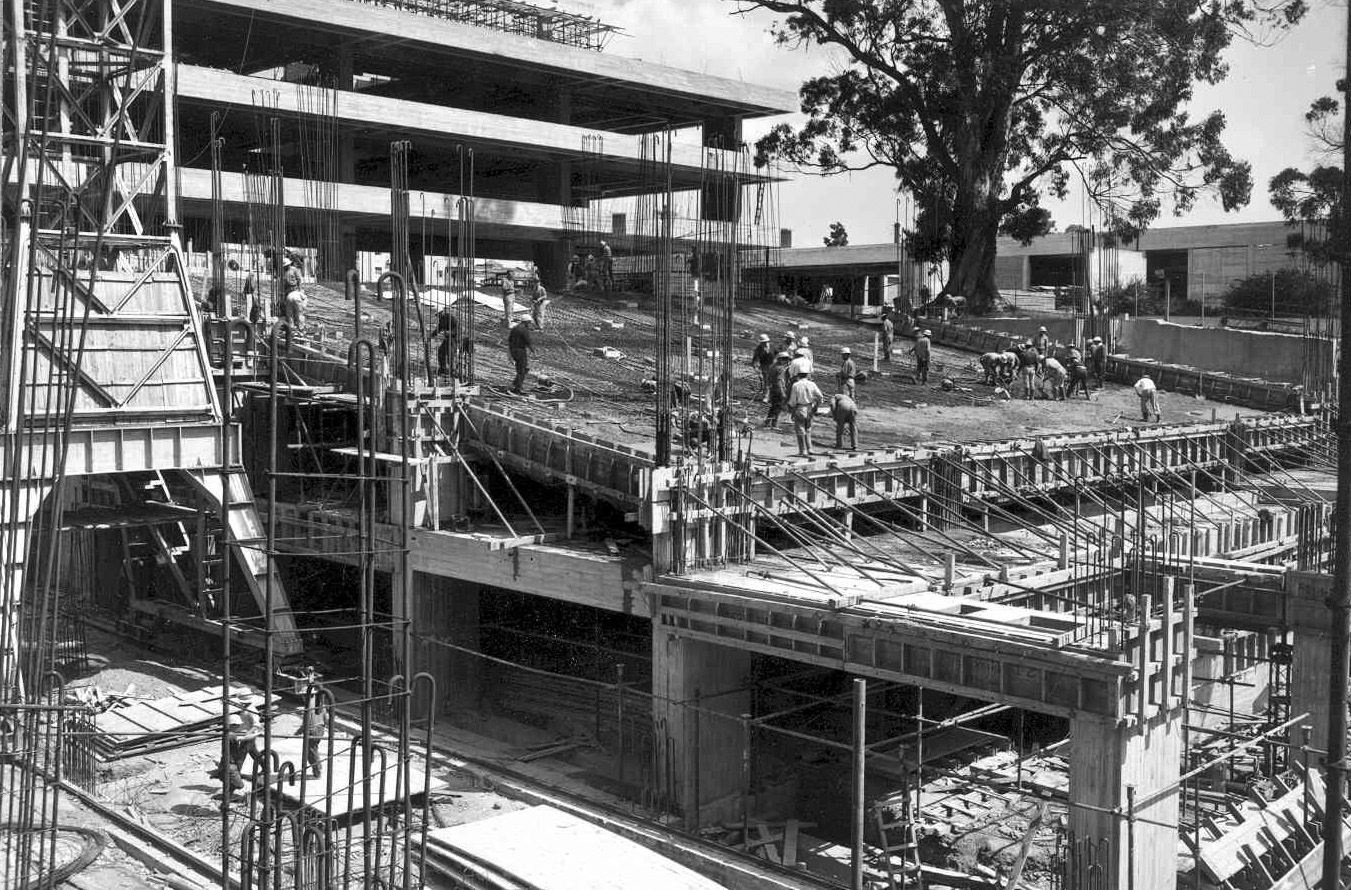The Lisbon headquarters and park of the Calouste Gulbenkian Foundation (FCG), located in the Parque de Santa Gertrudes, created the public image of the Gulbenkian Foundation: an expression of culture that became synonymous in Portugal with social progress and thus a sign of a new monumentality. This aspiration was defined at the outset by its commissioner, the chairman of the foundation, José de Azeredo Perdigão (1896 – 1993), and brought to fruition by an extensive team of technical staff, through a process lasting from 1956 until its opening in 1969. Alberto Pessoa (1919 – 1985), Pedro Cid (1925 – 1983) and Ruy Jervis d’Athouguia (1917 – 2006), the architects of the building complex, together with the landscape architects António Viana Barreto (1924 – 2012) and Gonçalo Ribeiro Telles (1922 –), translated Calouste Gulbenkian’s legacy into a modern version of an epic cultural landscape. Within this landscape, best described as a designed environment of natural and manmade topography, of hard and soft landscaping, of interlocking spaces and forms, the diffusion of culture has been understood by the public as a voluntary “offering”, reversing the enshrined tradition of imposed, doctrinaire cultural values. Involving art, architecture and landscaping, the built ensemble anticipated the modernisation of Portuguese society, which was still immersed in the dictatorial regime of Antonio Salazar’s Estado Novo. The creation of the Gulbenkian Foundation hinted at the free and democratic world that would only become a reality for Portugal after 1974. Everything in the realm of culture undertaken by the Foundation up to that point – which included scholarships that enabled Portuguese active in the arts or sciences to work in the main research hubs of the world, as well as social assistance and support of the arts and sciences within Portugal – had been steeped in a discourse of modernity still unknown to the Portuguese until that time. This new discourse would spread as the Foundation’s work began to benefit the community. The expression “when ‘modern’ was not a style but a cause”, frequently used to express the transforming power of architecture, gained particular significance in the Portugal of the 1960’s, because the Gulbenkian Foundation was indeed a “cause” of culture and was understood to be an engine of urban progress. As such, the Gulbenkian Building and Park signalled a new understanding of the values of monumentality, even on an international level. The concept of a monument that conveys from within itself a sense of representation, symbolic value, creates an architectural image that conveys a civic, cultural, political and ethical agenda. …

This work is licensed under a Creative Commons Attribution 4.0 International License.
